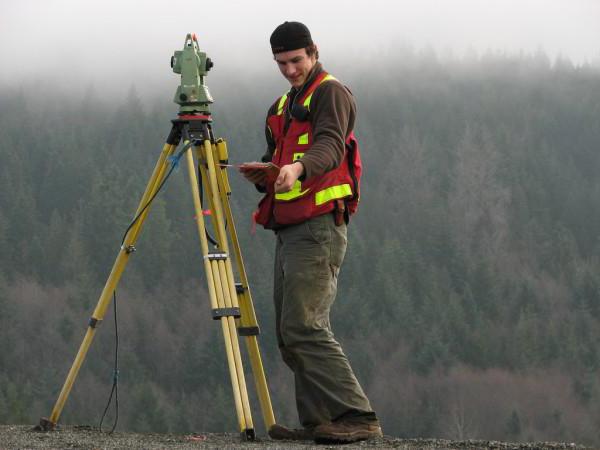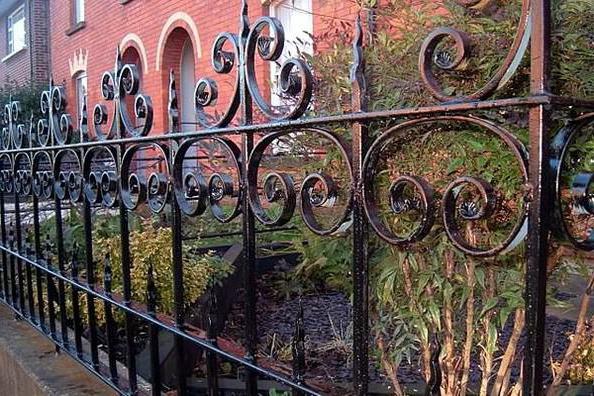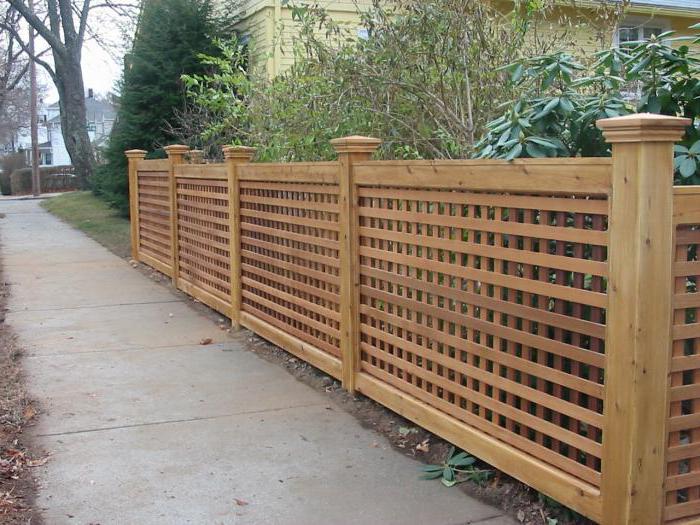When buying or building a private house, the owner will probably have to solve the problem of fencing the land. It seems that it could be easier than building a fence? Meanwhile, a number of mandatory requirements are imposed on the boundary fence erected between two neighboring sections. Avoiding a situation where the usual fence between neighbors in the private sector gives rise to conflicts and litigation will allow compliance with the building rules in force in our country. And also the ability to negotiate while maintaining good neighborly relations. So, what should a homeowner know about setting up a fence between neighbors in the private sector?

Rules, Norms, Legislation
In Russia today there is no single federal law containing the norms for the installation and construction of fences. Landowners are not prohibited from erecting fences of any height from the roadway. Limitations exist for a boundary fence separating the boundaries of two neighboring sections. All recommendations are enshrined in the Building Standards and Rules of the Russian Federation (SNiP) No. 30-02-97, approved by the Gosstroy. This document defines such important aspects as the height and transparency of the boundary fence, fire norms, sanitary requirements and stuff.
Guided by SNiP, municipal authorities can issue their own instructions containing rules for the owner of the site planning to establish a fence. Between neighbors (private sector), arrangements are also possible on the height or transparency of the boundary fence. If the estimated fence height exceeds the recommended SNiP, but the owners of the neighboring site have no objections to this, a mutual agreement must be fixed in writing, drawing up an agreement. In the future, if disputes arise, this document will serve as evidence of the legality of the building.

Where to begin?
What should be done before building a fence between neighbors in the private sector in order to avoid violation of engineering standards? The preparation of all necessary documents includes the following steps:
• Coordination of the border of the territory with the owners of the neighboring plot.
• Obtaining official permission in the department of architecture of the administration of the settlement on whose territory land plots are located.
Coordination of site boundaries
Coordination of borders with the owners of neighboring plots determines the place where a fence will be built between neighbors in the private sector. Begin the procedure by studying the cadastral and land plans for the land. These documents indicate the area and the territorial boundaries of the enclosed area.
Further, the installation of the fence between neighbors in the private sector should be documented with the owners of neighboring plots. For this, it will be necessary to draw up an act on the establishment of boundary lines and the absence of related claims from neighbors. This document is signed by the owners of neighboring plots and approved by the cadastral engineer. The act must be attached to the existing boundary plan with the obligatory issuance of a copy to the owners of the neighboring plot.
If you independently determine land boundaries it is impossible or the neighbors have any objections to this, to determine the boundaries will have to invite a surveyor.He will inspect and measure the terrain, examine the available documentation and prepare a plan with boundary signs. The boundary plan is also subject to approval by the administration.

Obtaining permission to build a boundary fence
After agreeing the boundaries of neighboring sections, it is required to obtain permission to erect a boundary fence. It is a document providing the owner of the site with the right to build the declared facility, that is, a boundary fence, as well as confirming the compliance of the facility with the building requirements of the administration of the village.
An approved permit for the construction of a boundary fence will avoid unpleasant consequences. For example, administrative liability in the form of a fine and (or) dismantling of the fence.
Local authorities, that is, the administration of the settlement on whose territory there are neighboring plots, can issue a permit. As a rule, this issue in local governments is dealt with by the architectural (urban) department. In addition, an administration specialist who is involved in architecture and urban planning can preliminarily explain the construction requirements applicable in the territory of a given settlement, including the allowable fence sizes between neighbors in the private sector.
In order to obtain permission, the owner of the site will need to submit the following documents:
• An application addressed to the head (head) of the administration.
• Documents confirming ownership of the land, and cadastral plan.
• Act on the coordination of borders of neighboring plots.
• Land survey plan.
• A written contract with neighbors to exceed transparency standards or height, if any.
The absence of the necessary documents or the mismatch of the plan of the future building with the requirements of SNiP may be the reason for the refusal to issue a permit to install a boundary fence.
Fencing bans
Another reason to obtain permission before building a fence between neighbors in the private sector is possible bans on the construction of fences in this area. The architectural department has the right not to issue an official permit for the construction of the fence if there are objects on the land that must be accessible. These include, for example, engineering systems for gas supply, electricity supply, water supply and sanitation, etc.
The construction of an unauthorized fence blocking access to these facilities will entail its forced dismantling without the right to receive material compensation.
SNiP recommendations: fence height
The height limit of the boundary fence prescribed by SNiP exists. Fencing should not cause neighbors such a problem as shading on the land. In accordance with the recommendations of SNiP No. 30-02-97, the permissible fence height between neighbors in the private sector is no more than 1.5 m.
The existing standards approved by the Gosstroy today determine recommendations for the construction of a boundary fence only between summer cottages. For land plots located in the private sector of a city or village, specific requirements regarding the height of the boundary fence are not provided. However, guided by SNiP, the local authorities of these settlements can legally establish their own standards, adjusted, for example, to the climatic conditions of their region or the relief features of the area.

SNiP recommendations: fence transparency
Another important requirement for a boundary fence is the transparency of the structure. To prevent neighboring areas from obscuring the new fence between neighbors in the private sector, SNiP prescribes the installation of fencing with transparency of at least 50%. What does this mean? The fence between neighbors in the private sector (see photo in the article) should be mesh or trellised.

Suitable materials for installing a boundary fence will be:
• Wood: wooden picket, vine and more.
• Rabitz.
• Metal (forged fence).
Other options are possible that meet the specified requirements. For example, a hedge. It is forbidden to establish a blank fence between neighbors in the private sector by SNiP. Mounting an opaque fence is only possible by written agreement with the owners of the neighboring land.
Sanitary standards
For the owner of a land plot planning to establish a boundary fence, SNiP additionally determines sanitary standards that must be observed during construction. It is recommended to be guided by the following rules:
• The distance between the boundary fence and the apartment building must be at least 3 meters. This rule applies to both the home of the owner of the plot and the house of the neighbors. It is worth noting that for those houses whose porch or roof has a protrusion of more than 50 cm, the distance to the fence is measured from the edge of the protrusion.
• The distance from the sanitary facilities (toilets) to the boundary fence should be 12 meters or more.
• For a building intended for keeping poultry or animals, the distance to the fence is not less than 4 meters.
• Other household and household buildings, including garages, can be built no closer than 1 m from the boundary fence.

At what distance should trees and shrubs be from the boundary fence?
Among other things, sanitary standards recommended by SNiP regulate the distance at which trees and shrubs should be located relative to the boundary fence. When planning the construction of the fence, you should consider:
• Shrubs and stunted trees with a height of less than 10 m should be no closer than 1 m from the boundary fence.
• The minimum distance from the fence of medium-sized trees with a height of 10 to 15 m is at least 2 m.
• Tall trees should be located no closer than 4 m from the boundary fence.
Compliance with these standards helps to prevent the destruction of the boundary fence by the root system of bushes and trees growing in neighboring areas.

Fire safety
Strict observance of all fire safety standards recommended by SNiP is an important condition for land owners who intend to establish a fence between neighbors in the private sector. Fire safety rules determine the closest possible distance at which a fence can be from buildings on neighbors' land plots. Depending on the materials from which the buildings are made, the maximum permissible distance from the boundary fence is determined as follows:
• Concrete or stone (brick) buildings - no closer than 6 m from the fence.
• Wooden buildings - 15 m from the boundary fence.
• Structures of non-combustible materials (brick, concrete, stone) with elements or floors made of wood - 8 m. The same distance should be observed for stone (concrete) buildings using other flammable materials.

In conclusion, I would like to add that not only the construction of the boundary fence requires compliance with all the rules and construction standards. The same condition applies to any structure erected on the territory of a private home ownership. Responsible attitude to the rules of individual construction will allow not only avoiding responsibility for violations of legislative requirements, but also maintaining good relations with people living in the neighborhood.








